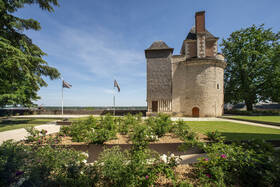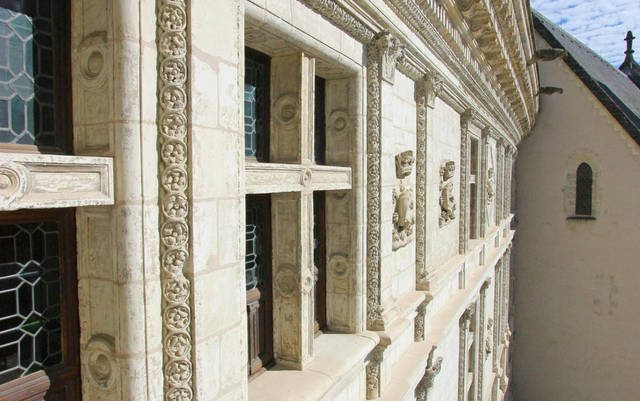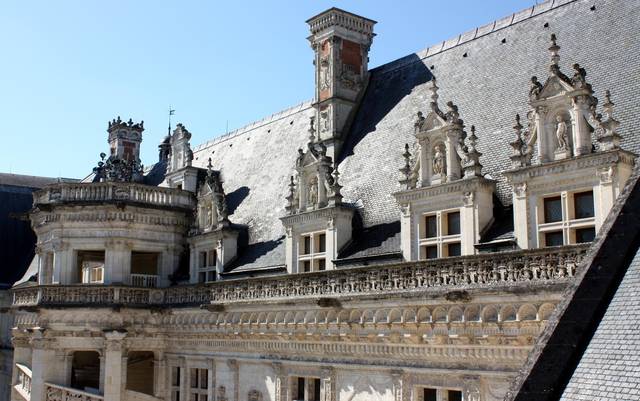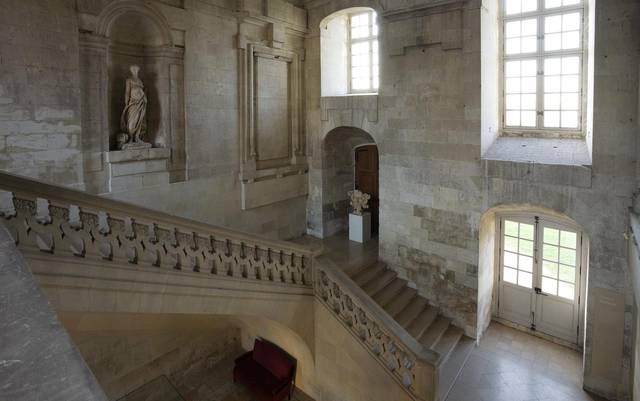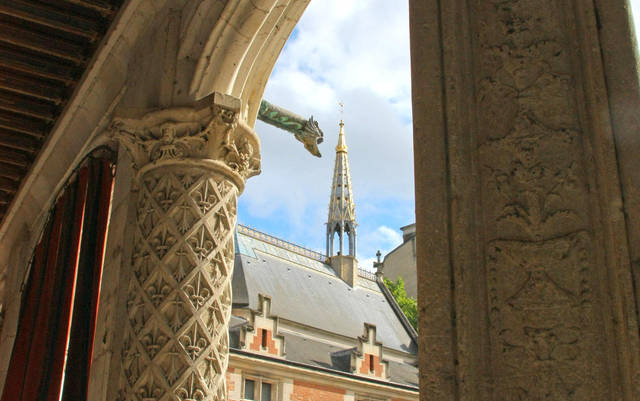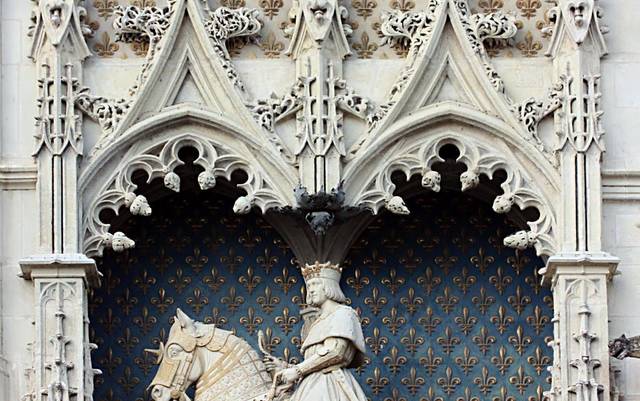- Home >
- Royal chateau of Blois >
- The visit itinerary >
- The exteriors
The exteriors
The Chateau's exteriors offer an exceptional panorama spanning several centuries of French architecture and encompassing the town of Blois and the Loire valley.
The courtyard of honor

 At the departure point of your visit, you will see at a glance that around the courtyard, there exist four wings, four monuments with differing styles that attest to the changes in occupancy of the Chateau. For more than a thousand years, constructions and destructions followed one another according to the desires of the famous figures who called it home.
At the departure point of your visit, you will see at a glance that around the courtyard, there exist four wings, four monuments with differing styles that attest to the changes in occupancy of the Chateau. For more than a thousand years, constructions and destructions followed one another according to the desires of the famous figures who called it home.
The Foix terrace
Evocative of the missing royal gardens, this new green setting draws its roots in the history of the Château… This place, shaded by centenarian trees is an invitation to relaxation, imagined in tribute to Anne of Brittany and Gaston of Orleans, two emblematic figures for the town of Blois, passionate about botany. Elegant and refined, this place with its contemporary layout is composed of several terraces and is covered with bushes and ancient flowers.
This garden is fitted on a terrace which was, for a long time, occupied by buildings. Nowadays, only the 13th century tower stands still. It is one of the rare remains of the medieval fortress, which protected the Foix neighbourhood and the west gate of the city located just below. During the 17th century, its defensive purpose was masked by the addition of a wooden stairway tower and an astronomical observatory at its top. Now erased, the Royal château’s gardens used to stretch over 25 acres during the Renaissance era, making it one of the most beautiful places in the kingdom, that favoured idleness and rest.
Spearheaded by the town of Blois, the creation of this contemporary garden within the Château helps showcase this panoramic balcony and gives an opportunity to admire the stunning view over the old town and the Loire. The Saint Nicolas church can be seen from there, a little further down.
The gardens

 No longer existing, the gardens were created for Louis XII by Pacello da Mercogliano, an Italian gardener. Connected to the castle via a stone bridge topped by a gallery, the terraced gardens were triple-tiered. Sites for strolling, relaxation and contemplation, they were also sites for divertissement (poetry, music and jeu de paume tennis), and were dotted with points of interest such as the Queen's Pavilion, the Orangery and the fountains. After several successive development projects, in 1636 Gaston, Duke of Orleans founded in Blois a botanical garden outshining Paris's, and added a menagerie and an aviary. Sold as national assets at the time of the French revolution, they were divided into plots and parceled out.
No longer existing, the gardens were created for Louis XII by Pacello da Mercogliano, an Italian gardener. Connected to the castle via a stone bridge topped by a gallery, the terraced gardens were triple-tiered. Sites for strolling, relaxation and contemplation, they were also sites for divertissement (poetry, music and jeu de paume tennis), and were dotted with points of interest such as the Queen's Pavilion, the Orangery and the fountains. After several successive development projects, in 1636 Gaston, Duke of Orleans founded in Blois a botanical garden outshining Paris's, and added a menagerie and an aviary. Sold as national assets at the time of the French revolution, they were divided into plots and parceled out.
Just two minutes from the foot of the Chateau, today's gardens poetically recall a splendid past and afford a magnificent view of the town and two facades of the castle.
La place du chateau (Castle Square)
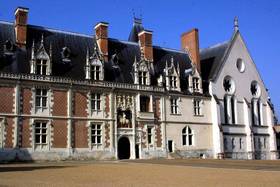
 As a vestige of the backyard of the medieval fortress, the forecourt of the castle came to be occupied by town houses; it was the Renaissance, and the court and the royal administration had to be fed and accommodated. In our times, the square is the site of the Blois-Chambord tourism office, a few restaurants and a garden at the emplacement of Saint-Sauveur church, which was destroyed in the 18th century. And facing the castle we find The House of Magic, a museum and theater of magic dedicated to the memory of Jean-Eugène Robert-Houdin, undoubtedly the most famous magician of the 19th century; he was born in Blois.
As a vestige of the backyard of the medieval fortress, the forecourt of the castle came to be occupied by town houses; it was the Renaissance, and the court and the royal administration had to be fed and accommodated. In our times, the square is the site of the Blois-Chambord tourism office, a few restaurants and a garden at the emplacement of Saint-Sauveur church, which was destroyed in the 18th century. And facing the castle we find The House of Magic, a museum and theater of magic dedicated to the memory of Jean-Eugène Robert-Houdin, undoubtedly the most famous magician of the 19th century; he was born in Blois.
The Saint-Calais Chapel

 In parallel with the construction of his wing in brick and stone, Louis XII had the royal chapel built. Consecrated in 1508, during the 17th century it was amputated of its nave; only the choir remains standing today. Having deteriorated, it was completely rehabilitated, first in the 19th century, and then after the bombings of 1944. Brought into being in 1957 by the renowned master glassmaker Max Ingrand, the stained glass windows depict some of the major episodes in the history of Blois.
In parallel with the construction of his wing in brick and stone, Louis XII had the royal chapel built. Consecrated in 1508, during the 17th century it was amputated of its nave; only the choir remains standing today. Having deteriorated, it was completely rehabilitated, first in the 19th century, and then after the bombings of 1944. Brought into being in 1957 by the renowned master glassmaker Max Ingrand, the stained glass windows depict some of the major episodes in the history of Blois.
Complots
Currently open from 10am to 5pm (last entrance at 4:30pm)







